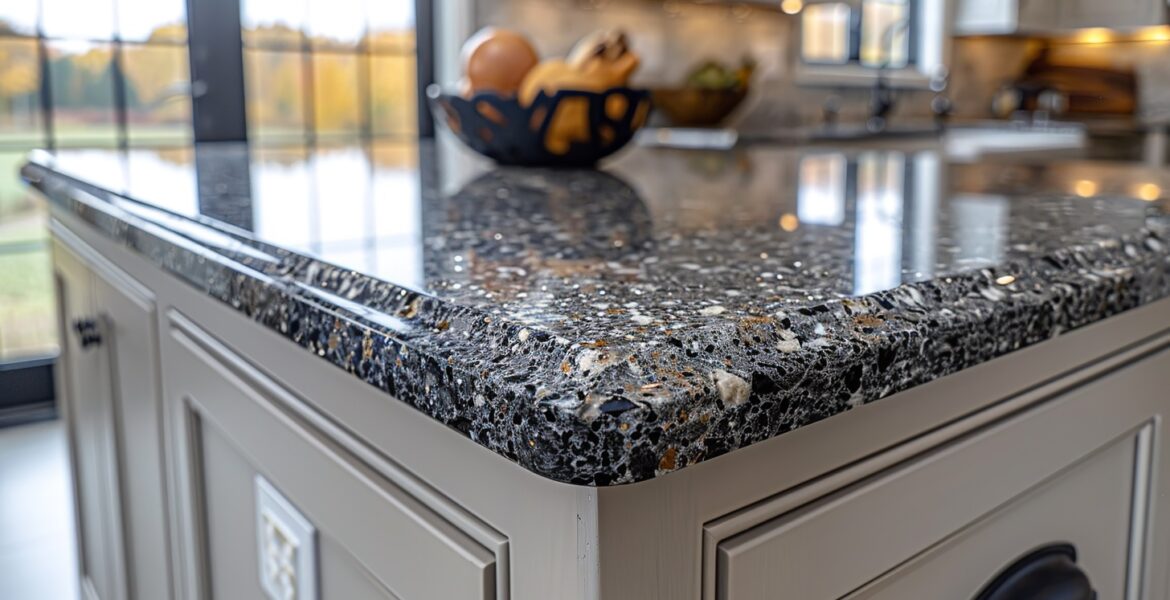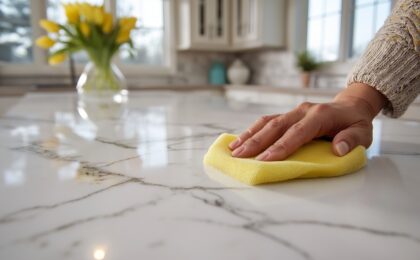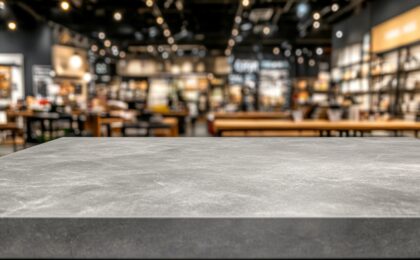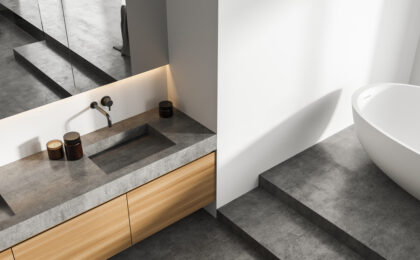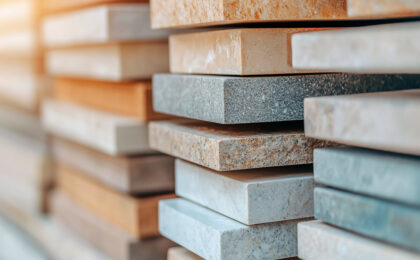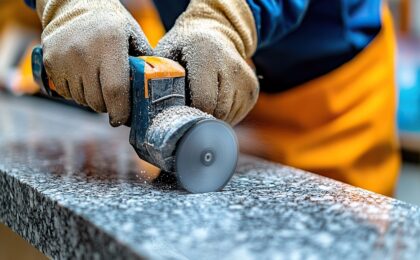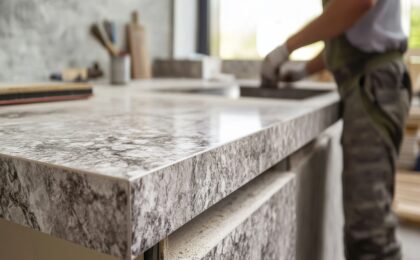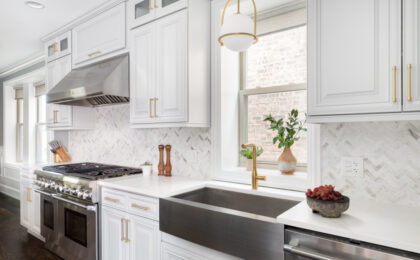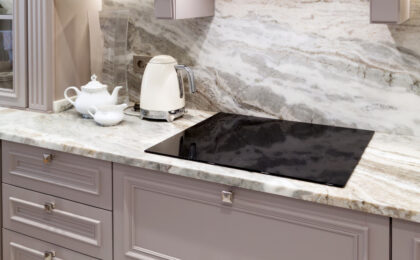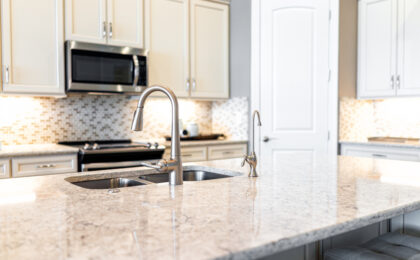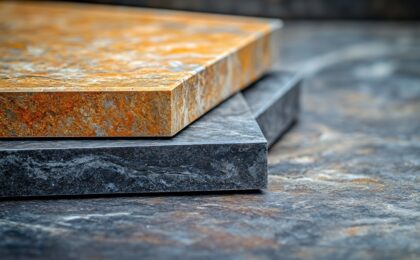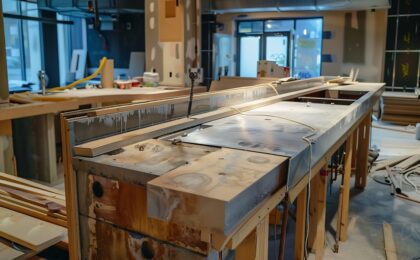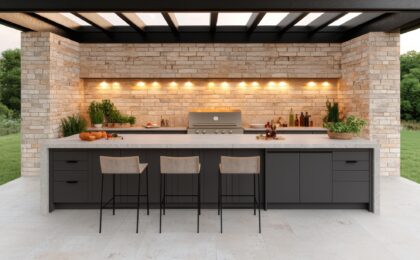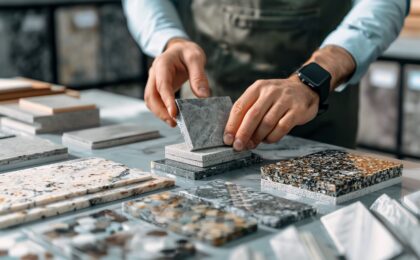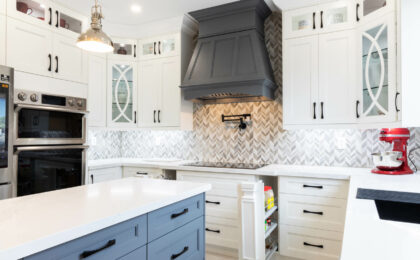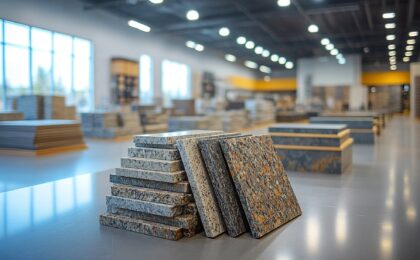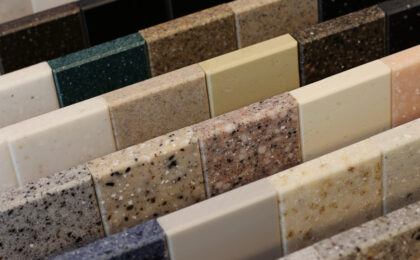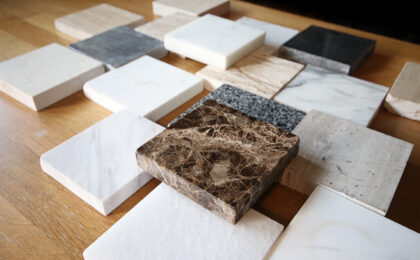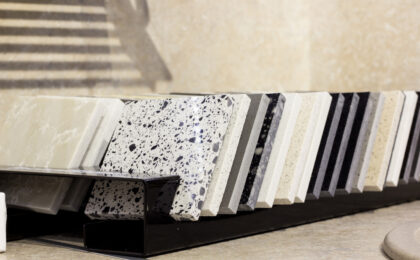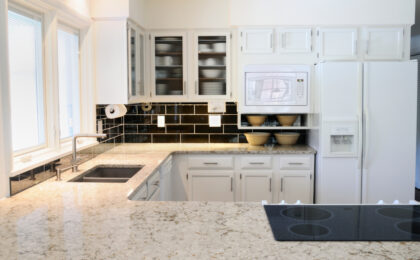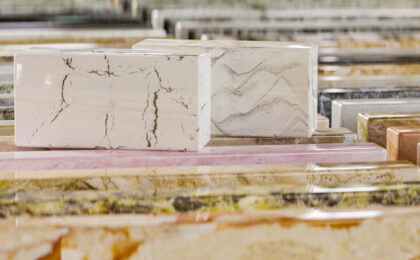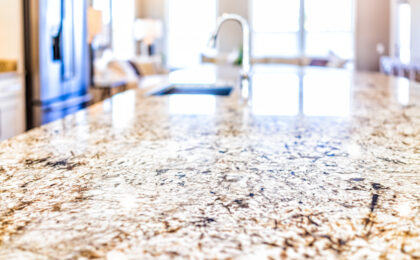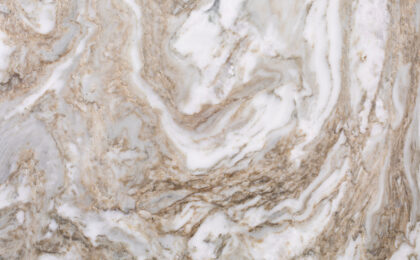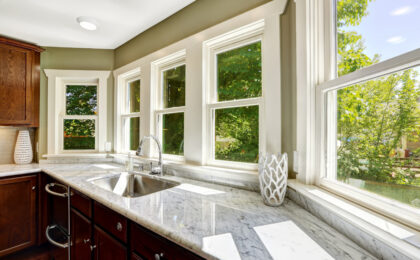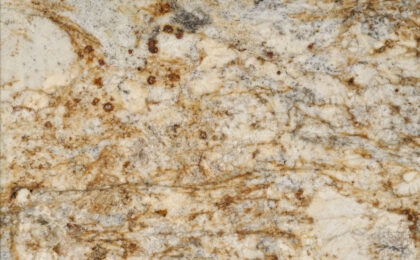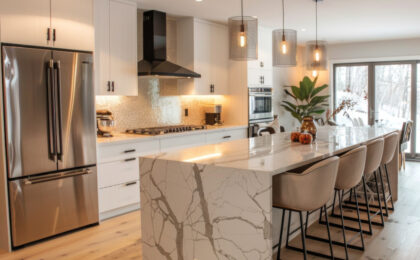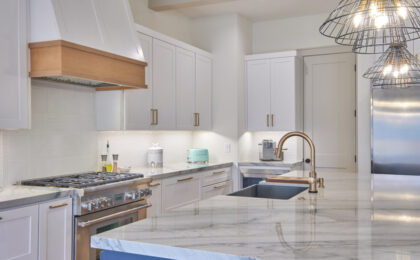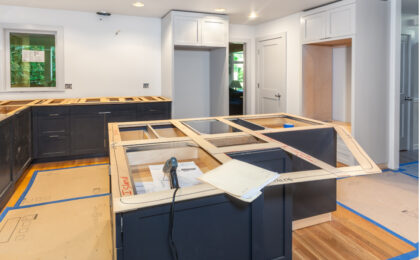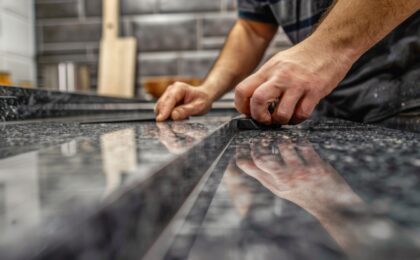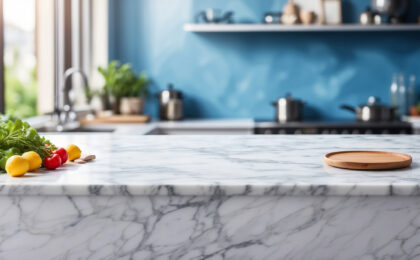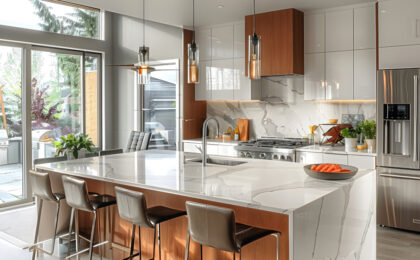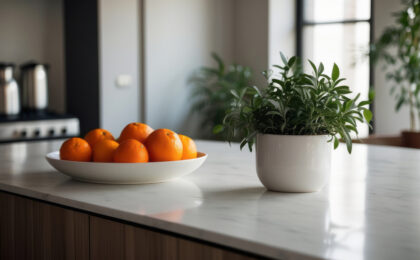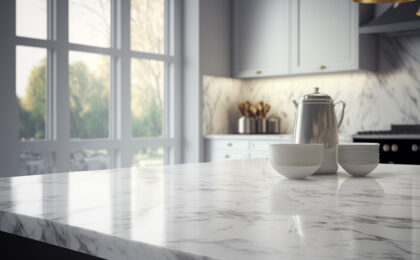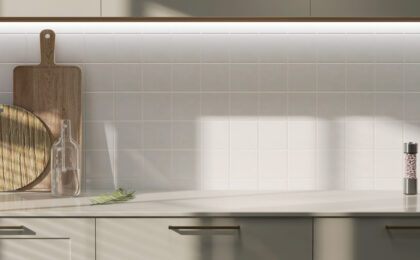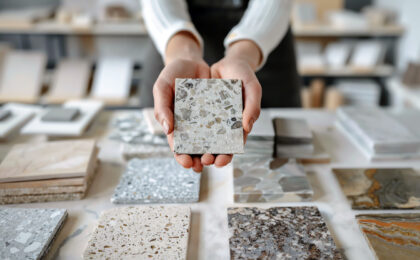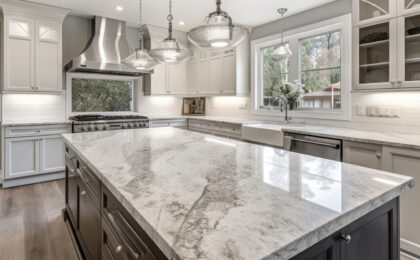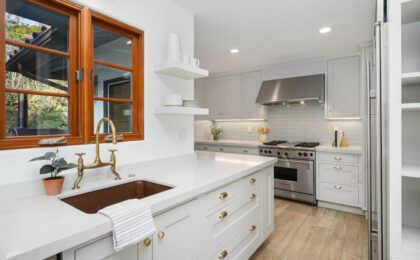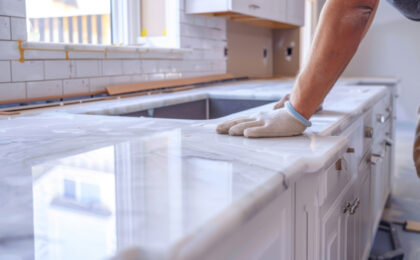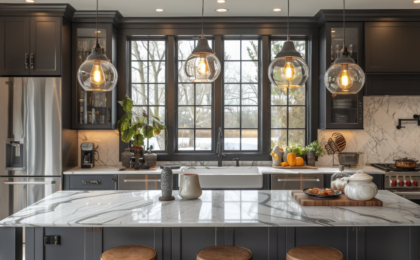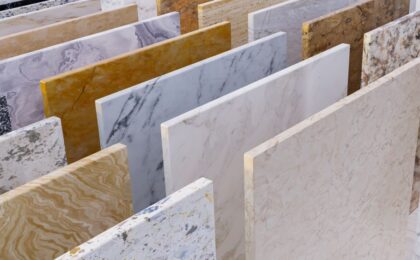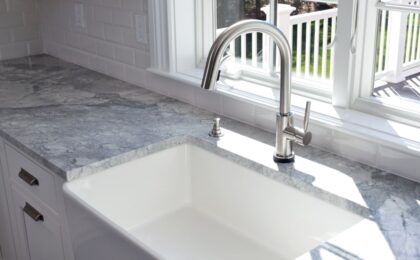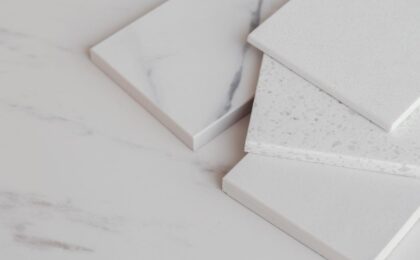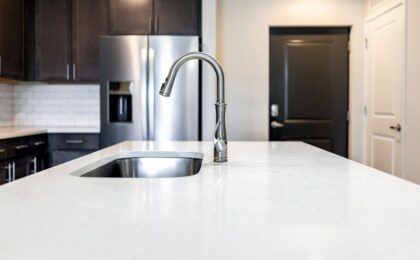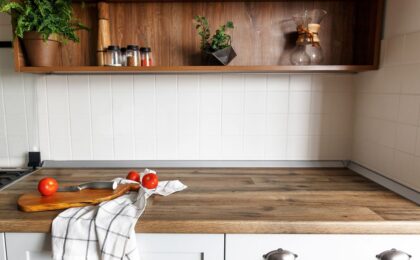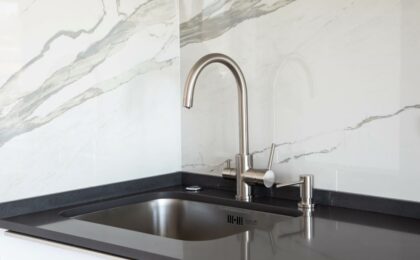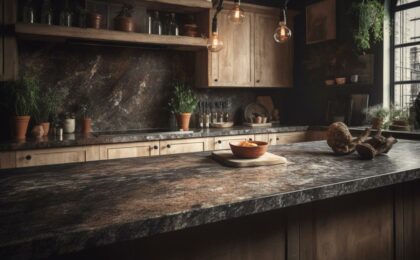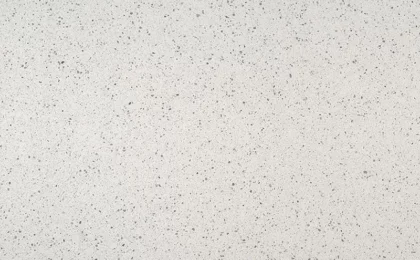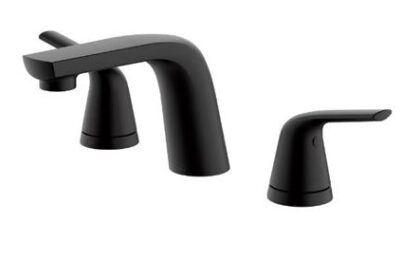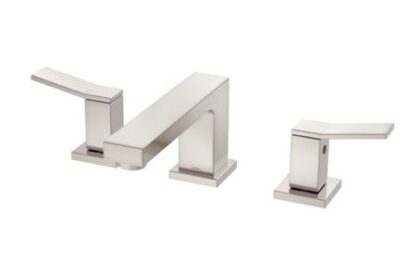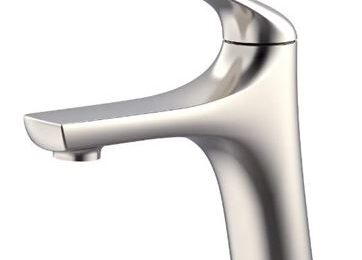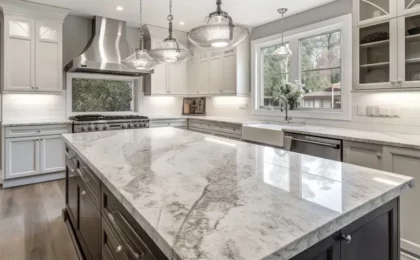If you have ever handled a piece of granite, you know just how heavy and dense it is. It is so heavy and dense that customers sometimes ask us whether gravity alone is enough to keep granite countertops in place. The answer is both yes and no.
Gravity is enough to keep granite countertops in place if the countertops are not exposed to any external forces. They are heavy enough that they just won’t move once placed. On the other hand, countertops that actually get used, bumped, and run into on a regular basis will not stay put with gravity alone.
The reality of daily life dictates that countertops are constantly subject to wear, tear, and impact. So it’s just not safe to rely exclusively on gravity to keep them in place. How do installers secure them? Keep reading to find out.
Silicone Adhesives
The most common installation method relies on silicone adhesives to keep granite in place. Once an installer has measured, cut, and verified placement, they will apply a bead of silicone-based adhesive along the top edges of the cabinets. The slab is then placed on top.
Although gravity still does most of the work here, the adhesive helps absorb energy so that impacts don’t jar the countertop loose. The adhesive is both a bonding agent and a shock absorber of sorts.
There are times when an installer might lay down plywood or MDF to provide a more solid base for the countertop. Combining a base with silicone adhesive makes the countertop even more resistant to impact. Throw in gravity and the countertop isn’t going anywhere.
Mechanical Fasteners
Although securing a granite countertop with adhesive is pretty typical in the 2020s, there are installations that call for mechanical fasteners. An installer might utilize screws and brackets applied underneath for extra strength and security.
Installations featuring thinner slabs are good candidates for mechanical fasteners. So are those with larger overhangs. But a typical kitchen installation in an average home goes just fine without the mechanical fasteners.
Leveling Is a Big Thing
Leveling is a chief concern when securing granite countertops with adhesive. More than one installer has discovered that failing to level properly can lead to cracks and breaks down the road. It is so important that skilled installers will actually level the countertops with a dry run before putting down any adhesive.
Leveling is designed to do two things: ensure a stable foundation and make the final product aesthetically pleasing. Both wood and plastic shims do the work. They are placed strategically to lift specific areas of the cabinet and/or countertop to achieve a perfect level.
Leveling actually helps keep countertops in place by reducing the effects of gravity on surfaces that are otherwise not level. Think of it in terms of balancing something on your finger. If not perfectly balanced, gravity will pull the object to one side the other. Leveling a countertop creates that balance so that gravity doesn’t work against the countertop.
Consider Professional Installation
As a leading provider of stone countertops in Utah, we install everything we sell. Moreover, the Bedrock Quartz way of doing things includes an unparalleled commitment to quality. We hope you will consider visiting one of our showrooms before choosing your granite countertops.
We recommend considering professional installation with your purchase. Although DIY installation is certainly possible, granite is heavy and fragile. Professional installers know how to safely handle and install the material. On the other hand, saving money on a DIY installation could be moot if the finished product doesn’t turn out well.
